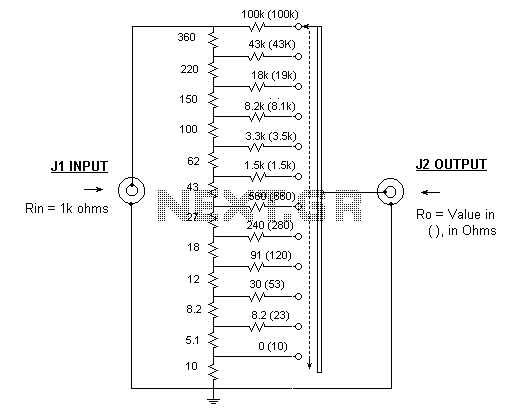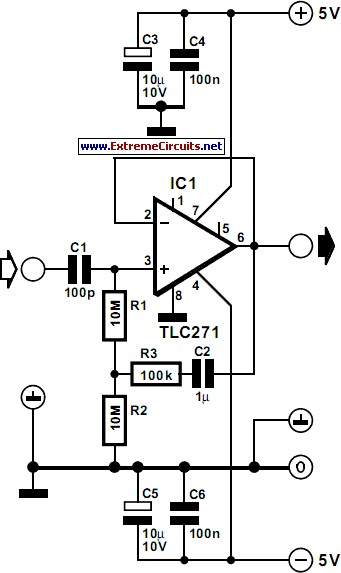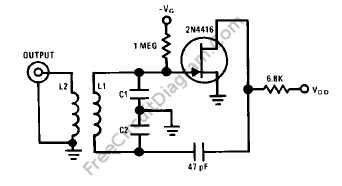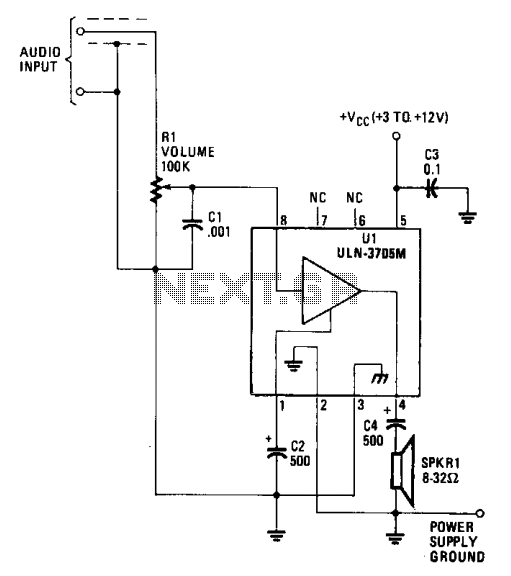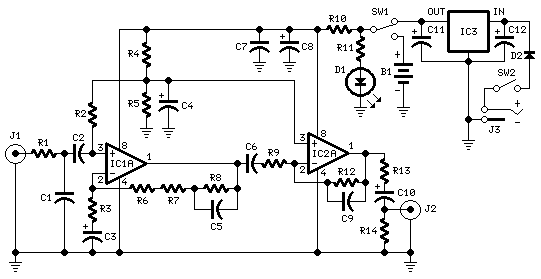
low impedance simple preamplifier
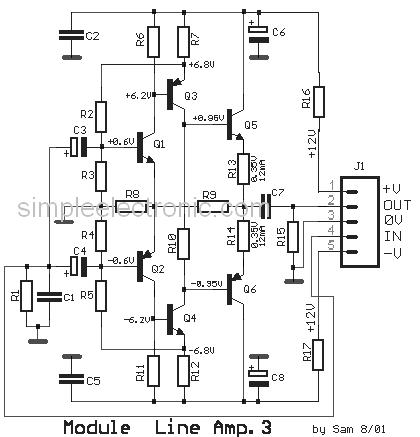
This is a simple low-impedance preamplifier circuit diagram used to amplify an audio signal. The circuit operates with a 12V DC power source and is straightforward due to its minimal component count.
The low-impedance preamplifier circuit is designed to enhance weak audio signals, making it suitable for various audio applications, including microphones and musical instruments. The circuit typically employs an operational amplifier (op-amp) as the primary amplification component, which is characterized by its high input impedance and low output impedance. This configuration ensures that the audio signal is amplified without significant distortion or loss of quality.
The power supply for this circuit is provided by a 12V DC source, which is sufficient for most op-amps to function effectively while providing adequate headroom for audio signals. The simplicity of the circuit is a significant advantage, as it minimizes potential points of failure and reduces the overall cost of the design.
Key components in this preamplifier circuit may include resistors for setting gain, capacitors for coupling and decoupling signals, and possibly a potentiometer for adjustable gain. The layout of the circuit should be carefully considered to minimize noise and interference, particularly in audio applications where signal integrity is crucial.
Overall, this low-impedance preamplifier circuit is an efficient and effective solution for amplifying audio signals, making it a valuable tool in various electronic audio systems.This is a simple low impedance preamplifier circuit diagram. It used to amplify an audio signal. This circuit use a 12Vdc sources and very simple because work with less components. 🔗 External reference
The low-impedance preamplifier circuit is designed to enhance weak audio signals, making it suitable for various audio applications, including microphones and musical instruments. The circuit typically employs an operational amplifier (op-amp) as the primary amplification component, which is characterized by its high input impedance and low output impedance. This configuration ensures that the audio signal is amplified without significant distortion or loss of quality.
The power supply for this circuit is provided by a 12V DC source, which is sufficient for most op-amps to function effectively while providing adequate headroom for audio signals. The simplicity of the circuit is a significant advantage, as it minimizes potential points of failure and reduces the overall cost of the design.
Key components in this preamplifier circuit may include resistors for setting gain, capacitors for coupling and decoupling signals, and possibly a potentiometer for adjustable gain. The layout of the circuit should be carefully considered to minimize noise and interference, particularly in audio applications where signal integrity is crucial.
Overall, this low-impedance preamplifier circuit is an efficient and effective solution for amplifying audio signals, making it a valuable tool in various electronic audio systems.This is a simple low impedance preamplifier circuit diagram. It used to amplify an audio signal. This circuit use a 12Vdc sources and very simple because work with less components. 🔗 External reference

